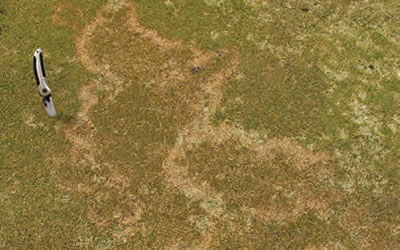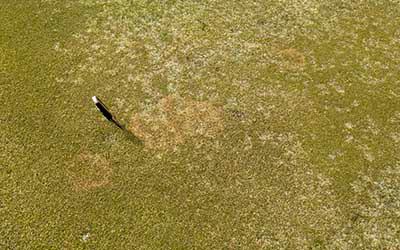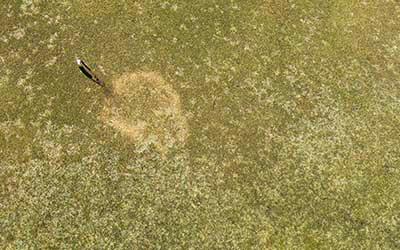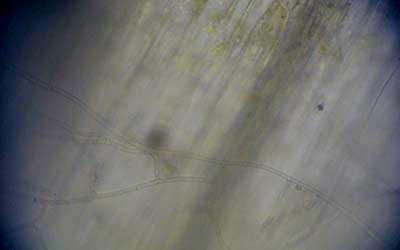Rhizoctonia cerealis
![]()
![]()
![]()
![]()
Hosts
Creeping bentgrass
Kentucky bluegrass
Tall fescue
Disease description
This disease often occurs in late fall or early spring in Missouri when cool-season turfgrasses are not actively growing. Symptoms can occur as yellow or straw-colored patches or rings up to 3 feet in diameter. In areas of high disease incidence, patches and rings can merge to form large, irregularly shaped areas. Individual plants exhibit a dieback or blight at the leaves resulting from pathogen infection at the leaf sheath. Recovery is slow because turf growth is slow at the time of year this disease occurs. The disease is most prevalent in Missouri on creeping bentgrass putting greens.
Control
Not much is known on control methods for this disease. Yellow patch occurrence can be sporadic from year to year, so preventive fungicide applications may be needless. Fungicides can be applied on a curative basis, but recovery is normally governed by conducive temperatures necessary for normal turfgrass growth.
Images




